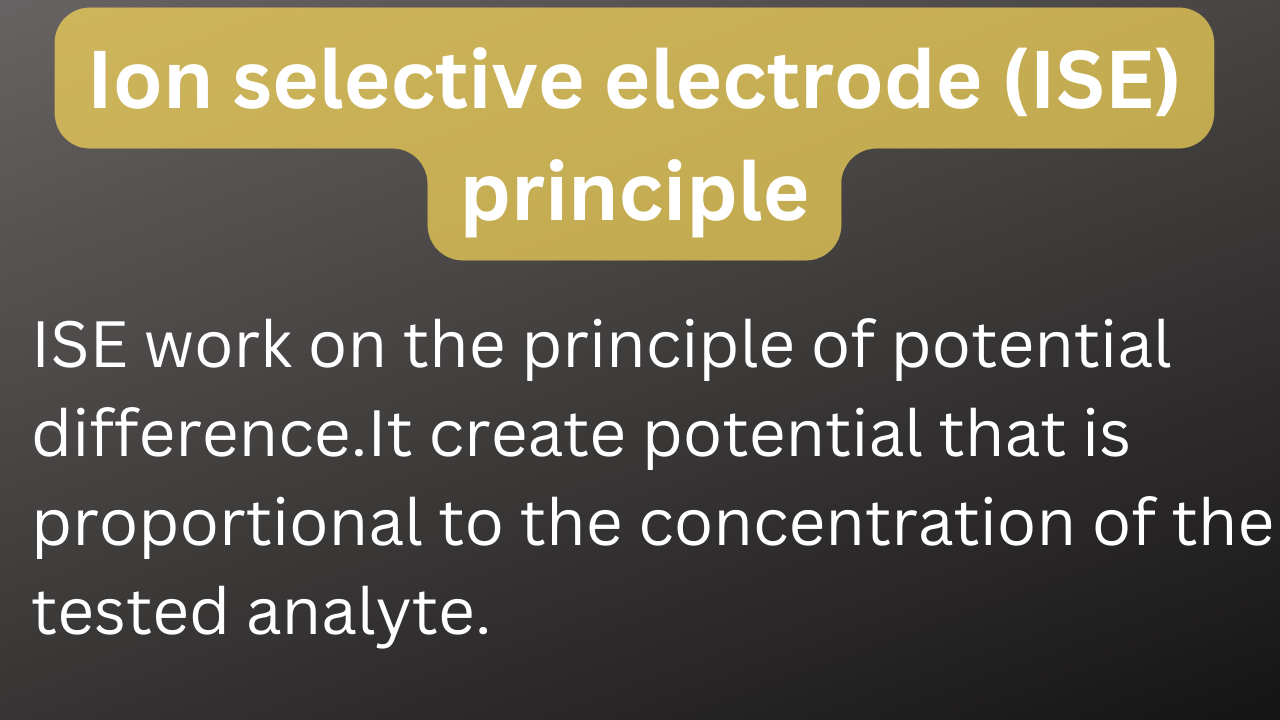Ion-selective electrode (ISE) is an important instrument for analyzing various electrolytes like Sodium, Potassium, Chloride, and Lithium in the pathology laboratory.
ISE is used in many departments of the medical field.
Principle of the ion selective electrode (ISE)
ISE principle is that, it create potential that is proportional to the concentration of the tested analyte.
Making measurements with ISE is a form of potentiometry. The most common ion-selective electrode is the Ph electrode. It contains This glass membrane responding to the hydrogen ions concentration in a solution.
Ion selective electrode procedure
The ion-selective electrode (ISE) procedure involves the following steps.
- Calibration: Before use, the ISE needs to be calibrated using standard solutions with known ion concentrations. This establishes a relationship between the measured potential difference and the ion concentration.
- Sample Preparation: The sample solution is prepared and adjusted to the desired conditions, such as pH and temperature, depending on the specific ISE.
- Electrode Conditioning: The ISE is conditioned by immersing it in a conditioning solution or rinsing it with distilled water to remove any contaminants and ensure proper functioning.
- Immersion: The ISE is immersed into the sample solution, and the potential difference is allowed to stabilize.
- Potential Measurement: The potential difference generated between the selective membrane and a reference electrode is measured using a voltmeter or pH meter. This potential difference is proportional to the ion concentration in the sample solution.
- Calibration Curve/Application: The measured potential is compared to the calibration curve or equation established during the calibration process to determine the concentration of the target ion in the sample solution.
Here’s the video of Ion selective electrode principle procedure.
Types of ion selective electrode
There are 4 types of ise electrod (ISE).
- Glass ion-selective electrode
- Liquid base electrode
- Solid base electrode
- Compound electrode
Each electrolyte ion has its own electrode. There are four kinds of electrodes.
- Sodium (Na)
- Potassium (K)
- Lithium (Li)
- Chloride (Cl)
- Calcium (Ca)
- Bicarbonate
Electrolytes are incorporated with arterial blood gas (ABGs) machines. It sucks an undiluted sample and the result is directly displayed on the screen. Such instruments are self-calibrated.
NOTE: Electrodes have to be kept in a buffer all the time, as drying will destroy the delicate measuring membrane and render the ISE useless.
ESE reference solution range table in the (Sodium, Potassium, and Chloride) serum
| Sodium | 136 – 145 mmol/l |
| Potassium | 96- 106 mmol/l |
| Chloride | 3.5 -4.5 mmol/l |

A good introduction to the topic. You could also consider including information regarding direct and indirect ISE methods and the benefits and advantages of each